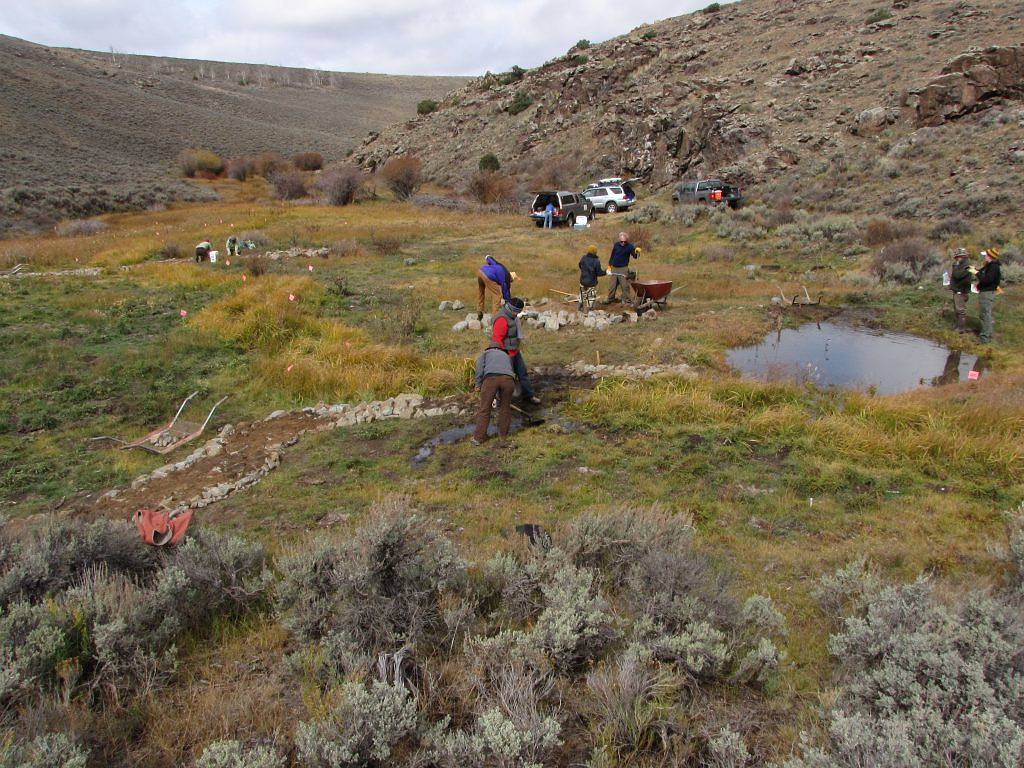Gunnison Basin Climate Change Adaptation and Wetland Restoration Monitoring
Wet meadows and riparian areas occupy a small proportion of the sagebrush ecosystem in the Gunnison Basin, yet provide critically important habitat for many species. These mesic areas, in an otherwise semi-arid climate, are vital to the life cycle of the federally threatened Gunnison sage-grouse, providing important brood-rearing habitat for the grouse to raise their young chicks. These meadows also provide important food and cover for insects, pollinators, neo-tropical migratory birds, mule deer, elk, and forage for domestic livestock.

Many riparian areas and wet meadows in the Gunnison Basin have been degraded by erosion and past land uses, resulting in incised gullies and lowered water tables. Intense episodic droughts, such as the one in 2002, have exacerbated these problems. As our temperatures continue to rise, droughts and intense runoff events that increase erosion are likely to become more frequent. If these already uncommon habitats degrade further, the many plants and animals that depend on them will suffer, including the Gunnison sage-grouse.

A study led by CSU researcher Renée Rondeau has found that strategically placing rocks in the wet meadows of Gunnison’s sagebrush hills slows water, reconnects the floodplain and increases wetland plant cover by 40%, despite unprecedented drought in the West. This technique benefits ranchers and the Gunnison sage grouse, which is federally listed as a threatened species.
Results published in the Journal of Restoration Ecology show that low-tech restoration structures were effective at rewetting intermittent streams and wet meadows within the arid landscape, even though six of the nine monitored years were considered drought years. Non-native invasive weeds declined, while forbs and grasses important to sage grouse and livestock operations increased.

Since only about 5,000 of these birds remain in the world, they cannot withstand more loss of this important habitat. Degraded riparian areas and wet meadows also pose challenges to ranchers, who are already experiencing other pressures. To help both wildlife and ranchers, we need to restore these habitats and make them better able to withstand change.



Left-click to view, and right-click to download.




